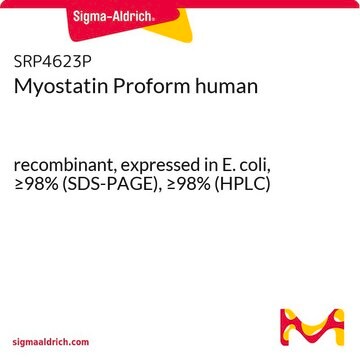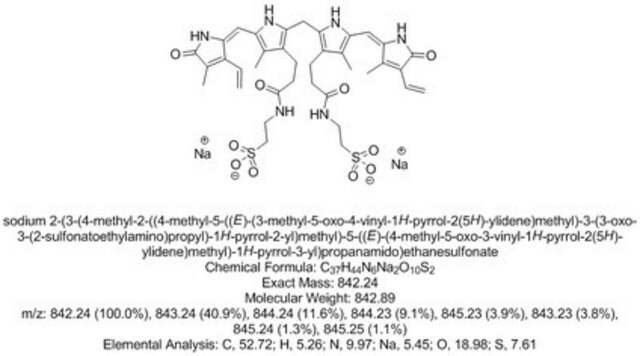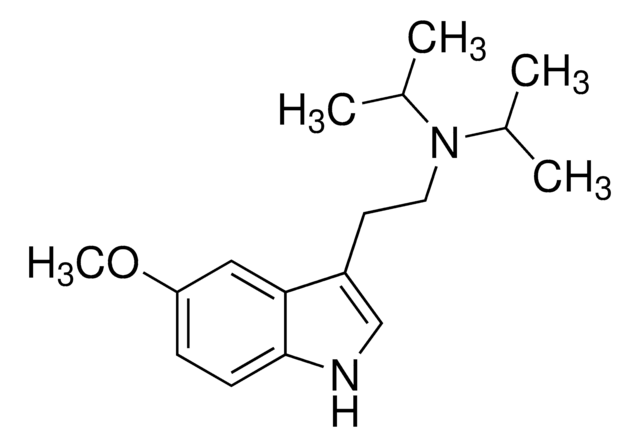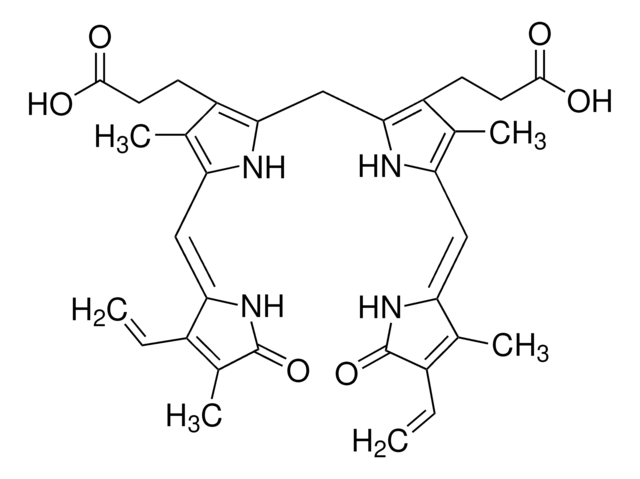M3064
Myostatin human
recombinant, expressed in E. coli, lyophilized powder, suitable for cell culture
Synonim(y):
GDF-8, Growth Differentiation Factor - 8
Zaloguj sięWyświetlanie cen organizacyjnych i kontraktowych
About This Item
Polecane produkty
pochodzenie biologiczne
human
Poziom jakości
rekombinowane
expressed in E. coli
Próba
≥95% (SDS-PAGE)
Formularz
lyophilized powder
masa cząsteczkowa
16 kDa (including a 31 amino-acid spacer and 6-His tag)
opakowanie
pkg of 0.1 mg
metody
cell culture | mammalian: suitable
numer dostępu UniProt
temp. przechowywania
−20°C
informacje o genach
human ... MSTN(2660)
Zastosowanie
Use recombinant myostatin to study its mechanisms of action in vitro.
Działania biochem./fizjol.
Myostatin is a 25 KDa, homodimer, that acts on muscle to induce SMAD family transcription factors such as SMAD2 and SMAD3. It inhibits the differentiation of myoblasts into mature muscle fibers. Positive control for myostatin in Western blots and ELISA.
Positive control for myostatin in Western blots and ELISA.
Ta strona może zawierać tekst przetłumaczony maszynowo.
Kod klasy składowania
11 - Combustible Solids
Klasa zagrożenia wodnego (WGK)
WGK 3
Temperatura zapłonu (°F)
Not applicable
Temperatura zapłonu (°C)
Not applicable
Środki ochrony indywidualnej
Eyeshields, Gloves, type N95 (US)
Wybierz jedną z najnowszych wersji:
Masz już ten produkt?
Dokumenty związane z niedawno zakupionymi produktami zostały zamieszczone w Bibliotece dokumentów.
Karima Relizani et al.
Molecular therapy : the journal of the American Society of Gene Therapy, 22(8), 1423-1433 (2014-05-28)
Myostatin regulates skeletal muscle size via the activin receptor IIB (ActRIIB). However, its effect on muscle energy metabolism and energy-dependent muscle function remains largely unexplored. This question needs to be solved urgently since various therapies for neuromuscular diseases based on
H Takahashi et al.
Domestic animal endocrinology, 48, 62-68 (2014-06-08)
The purpose of this study was to determine whether myostatin alters glucose transporter-4 (GLUT4) expression in bovine skeletal muscles and myoblasts isolated from double-muscled (DM) and normal-muscled (NM) Japanese Shorthorn cattle. Plasma concentrations of glucose were lower in DM cattle
Qiang Zhang et al.
The FEBS journal, 277(2), 466-476 (2009-12-18)
The ubiquitin ligase RING finger protein 13 gene (RNF13) was first identified in a screen for genes whose expression is regulated by myostatin in chicken fetal myoblasts. In this study, we demonstrate that the RNF13 gene is broadly expressed in
R E Ferrell et al.
Genomics, 62(2), 203-207 (1999-12-28)
Myostatin is a recently identified member of the transforming growth factor-beta family of regulatory factors, also known as growth and differentiation factor 8 (GDF8). The nucleotide sequence of human myostatin was determined in 40 individuals. The invariant promoter contains a
Yutaka Ohsawa et al.
PloS one, 10(7), e0133713-e0133713 (2015-08-01)
Myostatin, a muscle-specific transforming growth factor-β (TGF-β), negatively regulates skeletal muscle mass. The N-terminal prodomain of myostatin noncovalently binds to and suppresses the C-terminal mature domain (ligand) as an inactive circulating complex. However, which region of the myostatin prodomain is
Nasz zespół naukowców ma doświadczenie we wszystkich obszarach badań, w tym w naukach przyrodniczych, materiałoznawstwie, syntezie chemicznej, chromatografii, analityce i wielu innych dziedzinach.
Skontaktuj się z zespołem ds. pomocy technicznej








